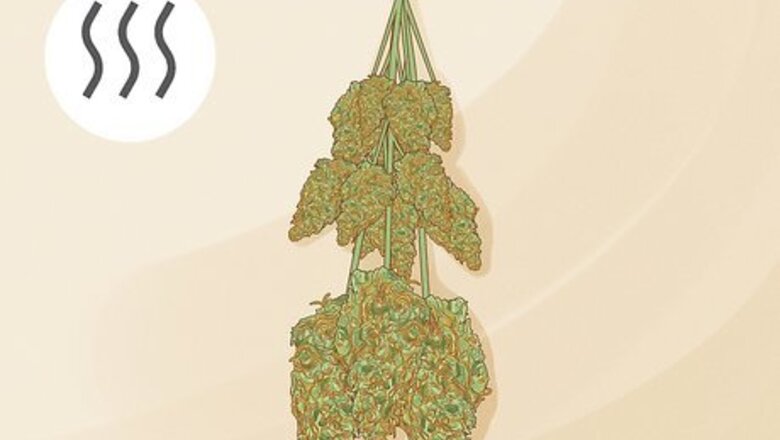
views
Drying Fresh Cannabis
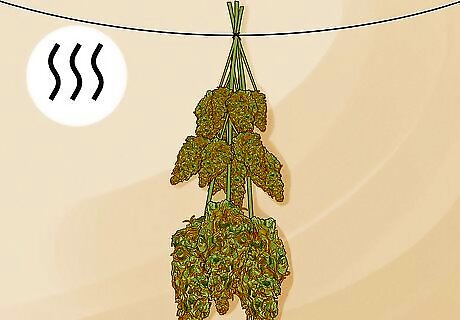
Hang your buds upside down from string or wire. Do this in a room where you can limit the amount of light, and control the temperature and humidity (a basement or windowless attic is ideal). Set your string or wire up off of the ground and hang the branches up by tying them with string or clothespins. Hanging the buds upside down will trick the plant into thinking it’s still alive, since the juices inside of the buds won’t drain out where you clipped the branch. That way, the buds will stay healthy! It’s key to maintain a soft airflow wherever you’re drying the buds. You can do this by running the “fan” setting on your home thermostat, or setting a desk fan on the lowest setting and pointing it at the ceiling of the room.
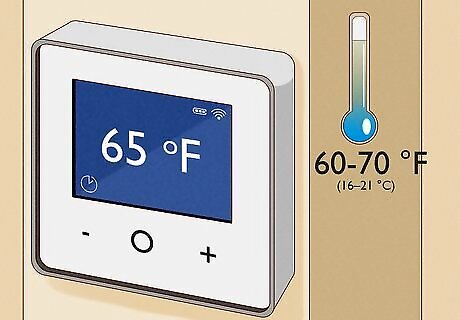
Keep the temperature roughly 60–70 °F (16–21 °C) at all times. Set a thermometer up somewhere in the room. You can even set multiple thermometers up if you want to keep a careful eye on the temperature in different parts of the room. Always maintain a temperature of 60–70 °F (16–21 °C) to help the marijuana dry out evenly and gradually over time. If you’re doing this in your home and you have central air, set it to 65 °F (18 °C) or so. Make minor adjustments depending on the specific temp in the room you’re using. You can use a space heater or air conditioner for the room if you don’t have central air.
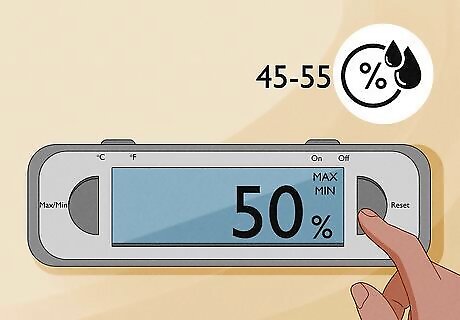
Use a hygrometer to maintain a relative humidity of 45-55%. Set a hygrometer up in the room you’re using to monitor the relative humidity. For best results, maintain a relative humidity of roughly 50% at all times. If the room isn’t naturally floating around 50% humidity, set up a humidifier or dehumidifier to change the overall humidity of the room. If the humidity is too low, the buds will dry out too quickly and the taste of the marijuana will feel off. If the humidity is too high, the buds will take too long to dry out, and mold may develop.
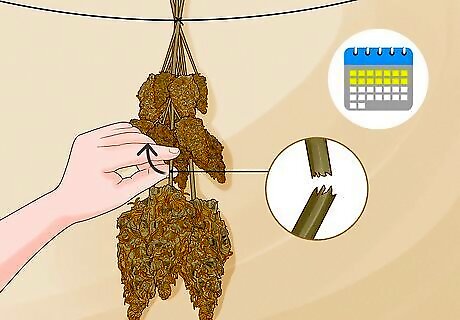
Continue drying until the stems snap instead of bending (usually 2 weeks). Check in on your buds periodically and squeeze the stems of each bud. If they have any give, they need to keep drying. Once they’re brittle, try gently bending the stems. If they snap and break, that bud is dry. If it just bends a little bit without breaking, it needs to keep drying. This process typically takes 2 weeks, but it can depend on the temperature and humidity. You can typically just pull the buds off of the main branch once they’re dried. If you are dry trimming, now is the point where you prune the plants, remove the sugar leaves, and clip the excess growth off.
Curing Your Buds
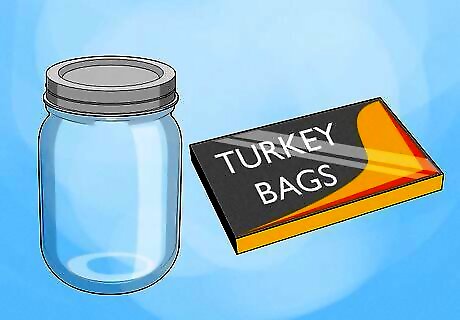
Get some airtight containers to cure cannabis. The vintage Mason jar is the most popular option, but you can use any container with an airtight seal. You can even use a clear turkey bag if you’d like. So long as the container doesn’t allow any outside air in, you can use it to cure cannabis. Turkey bags, also known as oven bags, are not the same as regular zip-lock baggies. These are larger bags that won’t leak or release moisture. Some growers will swear up and down that you absolutely cannot use plastic containers since it will damage the flavor of the buds, while other growers claim it’s fine to use plastic. There’s no good science out there supporting either position. In theory, you only need to cure larger buds where the interior of the bud hasn’t dried out entirely. If you’ve got really small buds, curing is optional (although most growers cure all of their buds for flavor reasons).
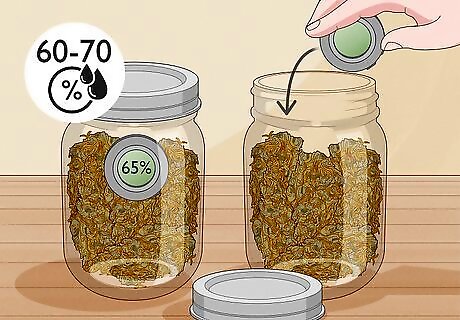
Put a hygrometer in the container if you want to be careful. If you dried the marijuana properly, it will establish a relative humidity of 60-70% inside of the container on its own—which is perfect for curing. If you want to monitor the humidity while you’re curing though, feel free to place a hygrometer inside of each container. There are also specialty containers out there for this that have hygrometers built into the lid. Those are a great investment if you plan on growing a lot of cannabis. The problem here is that even if the humidity is too high or low, it’s kind of hard to correct it at this point. You can leave the containers open and run a humidifier or dehumidifier, but mold may have already set in or your buds may have already over-dried.
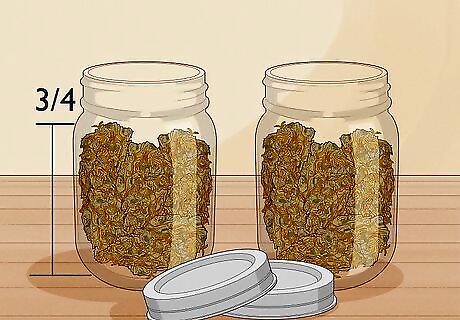
Fill each container up to ¾ of the way with your buds. You want a decent amount of air in each container, so don’t fill them up all the way. If you can place each bud flat, that’s probably the best option. It’s totally okay to fill a vertical container with buds, though. It shouldn’t have a huge impact. Put the lid on the container or close the airtight seal. Put a strip of tape on each container and write the date down so you can track how long this takes.
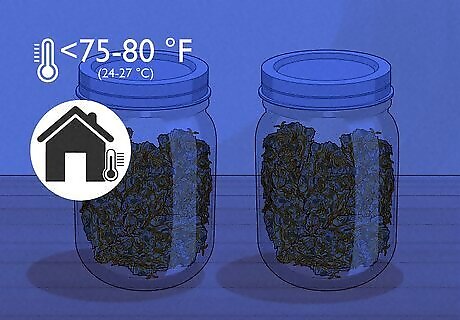
Store the containers in a dark area at room temperature. Light of any kind will cause the cannabinoids in your buds to decompose, so store the containers in a dark area. Avoid excess heat, and don’t place the containers in an area where they’ll be disturbed. The buds aren’t as sensitive to temperatures now that they’re fully dry. So long as they aren’t exposed to more than 75–80 °F (24–27 °C) or so, it should be fine. Basements are ideal for curing marijuana buds since they’re typically cooler and dark.
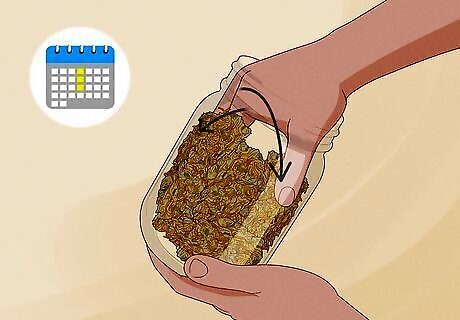
Turn the marijuana gently once a day to rearrange the buds. Every day or so, turn the buds so that no single side rests against a surface for too long. If you’re using bags, just gently rotate the individual buds to expose a new side. If they’re in jars, gently rotate them in your hands to slowly disturb the buds and rearrange them. Don’t turn them so abruptly or intensely that you break the buds apart.
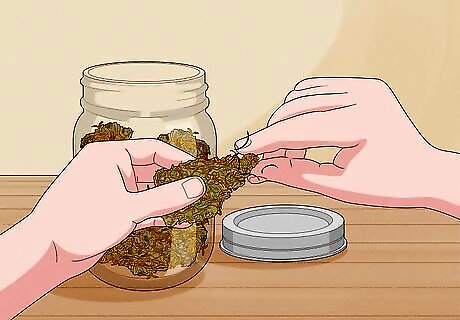
Check on the buds after you’ve cured for 1-3 weeks to see if they’re ready. After the first week, open a container and take a whiff. Gently squeeze a few of the buds. If the fragrance is sweet and moist and there’s just barely a little give to the bud, you’re done! If not, reseal the container and continue to cure the buds. When you’re done curing, they’re ready for consumption! This shouldn’t take more than 3 weeks, but you can theoretically cure marijuana for up to 6 months. There’s definitely a point where the returns start diminishing, though. Think of the difference between a whiskey aged for 10 years versus 12 years. Is the 12-year whiskey better? Usually. Is it worth waiting around? That’s up to you! You’ll have perfectly good cannabis with 3 weeks of curing, but you can take it further if you’d like. Most people will just store their marijuana in an airtight container after they’re done curing anyway, so it may continue to cure if you use the same container. You can also freeze or refrigerate the marijuana to preserve the cannabinoids if you prefer.
Harvesting the Buds
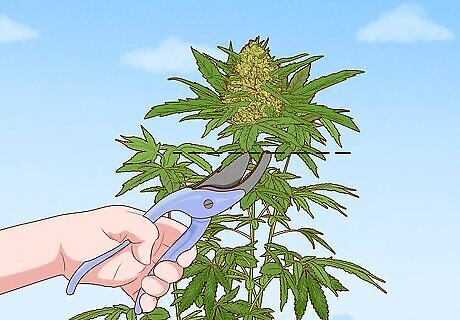
Harvest buds 8-10 weeks after flowering once they’ve slightly yellowed. Indica plants should be harvested roughly 8 weeks after flowers develop, while sativa and autoflower strains need 10 weeks to reach maturity. Harvesting too early will result in low levels of THC, while harvesting too late will lead to flavorless marijuana. Once the 8-10 weeks have passed, here’s when you know it’s ready: The trichomes (the mushroom-shaped bumps on your buds) turn translucent. The pistils are mostly yellow. Don’t wait for the entire bud to yellow out. Buds that are 100% yellow are too old, and they won’t taste particularly good. The plant develops a swollen or plump calyx, which is the flowery cup-like structure underneath the base of the flowers.
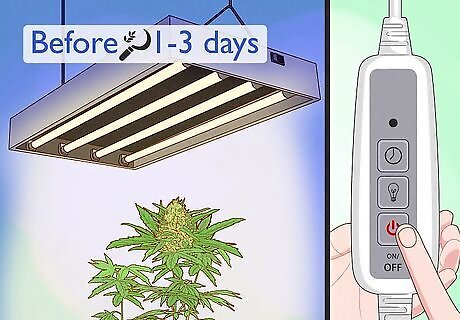
Cut the lights for 1-3 days if you want to flush the chlorophyll. Chlorophyll is the lifeblood for your marijuana plants. Unfortunately, it doesn’t taste very good. A few days before you plan on harvesting the plants, cut the grow lights. If it’s an outdoor crop, you can cover the plants if you prefer. This will “bleed out” some of that bitter-tasting chlorophyll. Many growers don’t do this, and it’s definitely optional, but it’s a good way to improve the flavor if you feel like being patient! Some people prefer to do this by “flushing” the soil with excess water to pull out the excessive nutrients and minerals in the soil. This isn’t as popular of a way to do this, but it’s an option if you prefer!
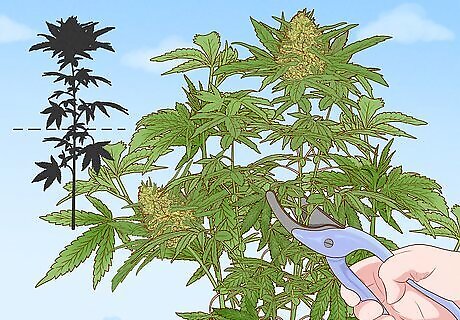
Clip off larger branches you want to harvest. Put on some latex gloves to avoid contaminating the crop and grab some pruning shears or trimming scissors. For each section of buds you’d like to harvest, clip the branch where it connects to the central stem of the plant. Set each small branch aside for drying. The size of each branch you harvest is entirely up to you.
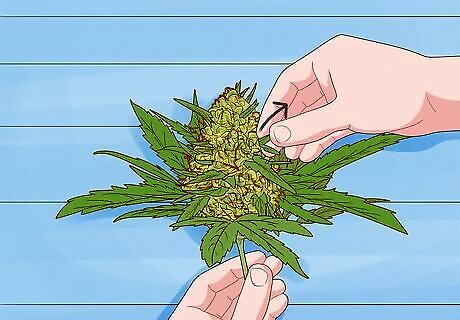
Clip the sugar leaves and remove unnecessary growth. You do this before drying if you’re wet trimming, but after drying the buds if you’re dry trimming. Simply clip each individual branch off of the larger plants so that you have 4–12 in (10–30 cm) lengths of stem so that there’s a handful of buds on each length. Prune the sugar leaves off of each individual bud. Don’t fully remove the buds from the branch they’re attached to. You need that branch to hang the buds and dry them out. Remove the fan leaves as well, if there are any. These are the “water leaves” that stick out and develop from the body of the plant. You should just be left with sections of branch that contain a bunch of buds with no leaves or excess growth. You can do this after you’re done drying if you want to perform a “dry trim.” Doing this before you dry is known as a “wet trim.”













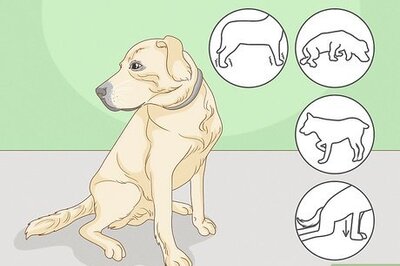
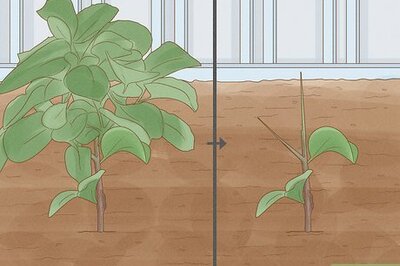



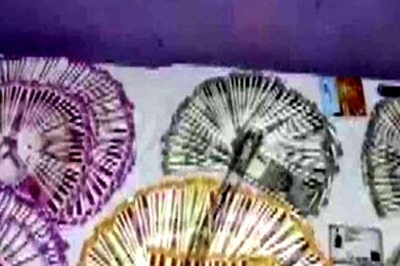
Comments
0 comment